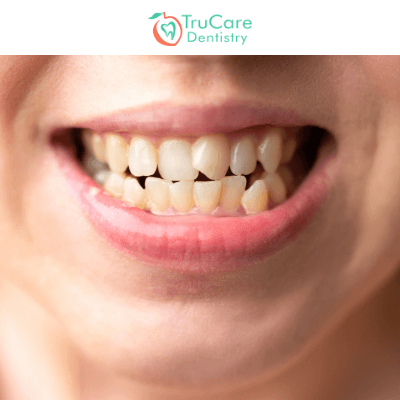
A radiant, healthy smile is not just about aesthetics—it’s integral to your overall health. One dental misalignment issue often corrected under cosmetic dentistry is crossbite. Understanding what crossbite is, its possible complications and the wide array of remedies cosmetic dentistry offers are essential to maintain optimal oral health.
What is Crossbite?
Crossbite is an occlusal irregularity where some of your upper teeth fall behind your lower teeth when you bite down—contrary to a normal alignment where the upper teeth slightly overlap the lower ones. It may affect a single tooth, several teeth, or even the whole row of teeth. It is a common condition seen in children and adults and can lead to dental issues if left untreated.
Differentiating the Types of Crossbite
Primarily, there are two types of crossbite: anterior crossbite and posterior crossbite. An anterior crossbite is similar to an underbite, where the top front teeth sit behind the lower front teeth. A posterior crossbite, on the other hand, affects the back teeth—upper back teeth sit inside the lower back teeth. The severity and extent of crossbite vary from person to person.
Implications of Ignoring Crossbite
Ignoring a crossbite can set off a series of dental complications. Over time, the misalignment can lead to an uneven distribution of bite force, causing excessive wear on the teeth. Hence, it could escalate to chipping or even fracturing of the teeth.
Moreover, a crossbite can affect your gums, leading to gum recession and even periodontal disease. It can also cause changes in facial symmetry, make chewing difficult, and potentially lead to speech problems. Most worryingly, untreated crossbites can develop into painful conditions like temporomandibular joint disorder (TMJ), a chronic jaw condition that can cause discomfort while talking, chewing, and even yawning.
Prevention and Home Care: The First Line of Defense
While genetic factors largely determine the likelihood of developing a crossbite, certain habits during childhood, such as thumb sucking or prolonged use of a pacifier, can contribute to its onset. Hence, encouraging children to abandon these habits early on is crucial.
Moreover, maintaining good oral hygiene goes a long way in ensuring overall dental health and preventing crossbite-related complications. Regular brushing, flossing, and routine dental check-ups can help detect and rectify alignment issues at the earliest.
Treating Crossbite: What Are Your Options?
While the term ‘cosmetic dentistry‘ might bring to mind procedures to enhance a smile’s aesthetics, it goes much beyond that. Cosmetic dentistry plays an instrumental role in treating dental issues like crossbite that not only disrupt the appearance of your smile but also impact your oral health and overall well-being.
With a range of treatment options, from orthodontic appliances and palatal expanders to reshaping and repositioning teeth and even jaw surgery, cosmetic dentistry offers a comprehensive solution to a crossbite. It works to restore both the function and aesthetics of your teeth, ensuring a healthier and more confident smile.
Fortunately, advances in cosmetic dentistry have made it possible to treat crossbites effectively, thereby improving the function and appearance of your teeth. Treatment plans are personalized and devised based on the type and severity of crossbite:
Orthodontic Appliances
Orthodontic appliances, like braces and clear aligners, are commonly used in treating crossbites. Traditional braces, made of metal or ceramic brackets and wires, apply constant pressure to shift teeth into the correct position gradually.
Clear aligners are an aesthetically pleasing alternative to braces. These custom-made, transparent trays are less noticeable and can be removed during eating and cleaning. The trays are replaced every two weeks, gradually shifting your teeth until they’re in the desired position.
Palatal Expanders
A palatal expander is an orthodontic device used primarily in children and adolescents whose jaw bones are still developing. It’s placed on the upper jaw and puts pressure on the left and right halves of the upper jaw, forcing them to move apart. This process widens the palate and gives the upper teeth the necessary space to align correctly over the lower teeth.
Tooth Reshaping or Repositioning
Cosmetic dentistry offers the option of tooth reshaping or repositioning for minor anterior crossbites. This process involves reducing the size of the lower tooth to enable the upper tooth to close properly over it.
Jaw Surgery
Orthognathic surgery, commonly known as jaw surgery, is typically the last resort for severe cases of crossbite in adults. This surgery involves cutting and realigning the jaw bone to correct its positioning. After the surgery, braces or clear aligners are usually used to fine-tune the bite and ensure the teeth align correctly.
Let’s Sum It Up
With a balanced focus on aesthetics and function, cosmetic dentistry provides a holistic solution to the problem. Remember, early intervention is crucial in the case of crossbites. Regular dental check-ups are critical in spotting the signs of a crossbite early on, allowing for more straightforward treatments. If you suspect that you or your child has a crossbite, don’t hesitate to consult a dental professional. Many effective treatment options await you in cosmetic dentistry, ensuring a healthier, happier smile.
So if you’re looking for trusted cosmetic dentistry services in Roswell, GA, or neighboring areas like Alpharetta, Dunwoody, Marietta, Milton, Sandy Springs, or Woodstock, you can book an appointment at TruCare Dentistry. Visit our website or call (678) 321-7575 to book your appointment and learn more about our services.
